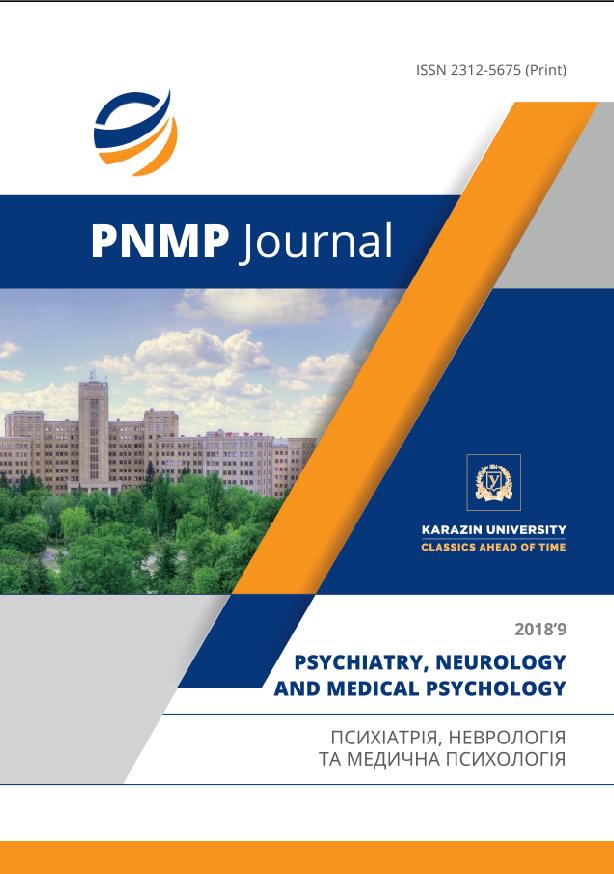СИНДРОМ АНГЕЛЬМАНА: КЛІНІЧНИЙ ВИПАДОК СКЛАДНОЇ ХРОМОСОМНІ АБЕРАЦІЇ У ДИТИНИ З ЗАТРИМКОЮ ПСИХОФІЗИЧНОГО РОЗВИТКУ.
Abstract
In the structure of the genetic causes of Angelman syndrome, homogeneous disomy of paternal origin on chromosome 15 with translocation is about 1%. It is accompanied by unexpressed phenotypic manifestations, with a low incidence of convulsive paroxysms and satisfactory physical development of patients. The article presents a clinical case of complex chromosomal aberration of chromosome 15 in a child with Angelman syndrome and congenital malformations (nonunion of the thoracic lymphatic duct). During the examination, a whole range of different research methods were used: somatogenetic, clinical and genealogical, cytogenetic, molecular genetic, instrumental, clinical laboratory, biochemical, and others. A psycho-neurological examination of this child was also conducted. Based on a cytogenetic examination and a comparative genomic hybridization study, an abnormal male karyotype was detected in the patient: de novo: 45, XY, der (15) t (15; 15) (q10; q10) dup (15) (q13q11). Using the FISH method, the isodicentric chromosome 15 of parental origin was found, which was formed by two cen15 and contained two copies of the critical region (15) (q11q13) of Prader-Willi / Angelman syndrome, which is commonly called the “Proximal inverted duplication - invdup (15)”. Phenotypic manifestations in partial trisomy along the long arm of paternal origin with isodicentric chromosome 15 with inverted duplication of the proximal region are described. As a result of the work, it was determined that children with congenital malformations and delayed psychophysical development, as well as their parents necessarily need medical genetic counseling and the use of modern molecular genetic diagnostic methods for verification of the diagnosis. Sick children, the karyotype of which has an isodicentric chromosome of 15 paternal origin, which contains two copies of the critical region (15) (q11q13) of Prader-Willi / Angelman syndrome, may have marked main clinical symptoms and craniofacial dysmorphisms characteristic of Angelman syndrome.
Downloads
References
Абатуров А. Е. Синдром Ангельмана / А. Е. Абатуров, Л. Л. Петренко, Е. Л. Кривуша // Здоровье ребенка. – 2015. – № 5. – С. 83–92.
Абатуров А. Е. Синдром Ангельмана / А. Е. Абатуров, Л. Л. Петренко, Е. Л. Кривуша // Здоровье ребенка. – 2015. – № 6. – С. 119–125.
Шевченко А. Синдром Ангельмана: ціна «щастя» / А. Шевченко // Приватний лікар. – 2017. – № 6.– С. 38–39.
Molecular cytogenetic analysis of inv dup (15)chromosomes, using probes specific for the Prader-Willi/Angelman syndrome region: clinical implications / J. Leana-Cox, L. Jenkins, C. G. Palmer [et al.] // Am. J. Hum Genet. – 1994. – № 54: – Р. 748–756.
Battaglia A. The behavioral phenotype of the idic(15) syndrome / A. Battaglia, B. Parrini, R. Tancredi // Am. J. Med. Genet. C Semin. – 2010. – № 15. – Р. 448–455.
The idic(15) syndrome: expanding the phenotype / E. C. Galizia, R. Palmer, J. J. Waters [et al.] // Am. J. Med.Genet A. – 2012. – № 158A (6). – Р. 1505–1508

